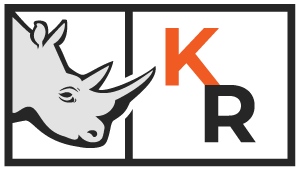In the fast-paced world of contact centers, it’s easy to get lost in the sea of customer interactions, call logs, and ticking KPIs. However, the significance of measuring Customer Satisfaction can’t be overstated. More commonly referred to as CSAT, customer satisfaction not only acts as a litmus test for your service quality but also as a compass that guides business growth.
Why is Measuring Customer Satisfaction Crucial?
- Understanding Your Customers: Knowing how satisfied your customers are helps you gain insights into their expectations and preferences.
- Improving Customer Retention: A satisfied customer is more likely to stick around, and retaining existing customers is often more cost-effective than acquiring new ones.
- Enhancing Brand Image: High customer satisfaction levels contribute to positive word-of-mouth, which, in turn, elevates your brand image.
- Identifying Areas for Improvement: CSAT data can highlight specific areas where your service may be falling short, enabling targeted improvements.
How to Effectively Measure CSAT Scores
Monitoring and assessing customer satisfaction is crucial for any contact center to ensure high-quality service delivery. Here are some effective strategies for measuring CSAT scores:
Surveys Post Interaction
One of the most commonly used methods to gauge customer satisfaction is through post-interaction surveys. These surveys can be implemented immediately after a customer interaction, either through email, SMS, or one of the most effective means is an after call IVR survey. It’s essential to keep these surveys concise and direct, as customers are more likely to participate if the questionnaire is brief and easy to complete.
5 areas commonly measured include:
- How likely are you to recommend us (NPS)?
- Did we resolve your concern to your satisfaction (First Call Resolution)?
- How easy was it to reach us (Customer Effort)?
- Was the agent knowledgeable?
- Was the agent polite and courteous (rated on a scale, allowing customers to provide their feedback conveniently)?
Utilize Speech and Conversational Analytics
Speech analytics programs are a goldmine of vital customer feedback. By analyzing the content, tone, and context of customer interactions, speech analytics systems can accurately gauge customer sentiment and satisfaction levels. This technology employs advanced natural language processing algorithms to identify keywords, emotions, and patterns that reveal valuable insights into customer experiences.
By detecting indicators of frustration, positivity, or even subtle nuances in speech, leaders can pinpoint areas where operational improvements are needed. This allows for timely interventions, targeted training, and process adjustments, ultimately leading to more personalized and satisfactory customer interactions.
Timing of Surveys
The timing of sending out surveys is crucial. Ideally, surveys should be sent shortly after the customer interaction, while the experience is still fresh in their mind. This ensures that the feedback received accurately reflects the customer’s experience and minimizes recall bias. However, if a customer has recently expressed dissatisfaction during a call, it may be better to delay the survey to allow for resolution or follow-up, as this can impact their overall satisfaction rating.
Clear and Actionable Questions
When designing survey questions, it’s important to use clear and concise language. Ambiguity or confusion in the questions can lead to inaccurate responses. Avoid leading questions that could influence the customer’s perception or bias their feedback. Instead, focus on objective and actionable questions that allow customers to provide specific feedback on their experience.
Continuous Feedback Loop
Measuring CSAT scores is not a one-time event but an ongoing process. Implementing a continuous feedback loop ensures that customer satisfaction is regularly monitored and improvements can be made in real-time. Analyze the survey results, identify trends, and take prompt action to address any recurring issues or areas of concern. Regularly communicating these improvements to the customers can also help to build trust and loyalty.
Benchmarking and Comparison
To gain further insights, it’s helpful to benchmark your CSAT scores against industry standards or compare them with your own historical data. This allows you to understand how well your contact center is performing in relation to others and identify areas where you may excel or lag behind. Benchmarking provides valuable context to your CSAT scores and can guide your efforts to improve customer satisfaction.
Turning CSAT Insights into Actions
Measuring and analyzing customer satisfaction is only half the battle. The next crucial step is acting upon these insights. Create an action plan that addresses the issues and opportunities identified through CSAT analysis. This might include refining training programs, optimizing staffing levels, or implementing new technology solutions. Regularly review the impact of these changes on CSAT scores to ensure that your actions are driving the desired outcomes.
Partner with an Experienced Contact Center Consultant
If you either own or manage a contact center, you know there is no shortage of unique and reoccurring problems. Working with an experienced consultant who knows how to solve these problems not only saves you enormous amounts of time, but also resources.
The Knowledge Rhino team has more than 30 years of experience working with contact centers across the world. Plus, our approach is tailored to you, which means we base all of our recommendations on your unique objectives.
Contact Knowledge Rhino today to learn how our expert consulting services can help tame contact center chaos.


